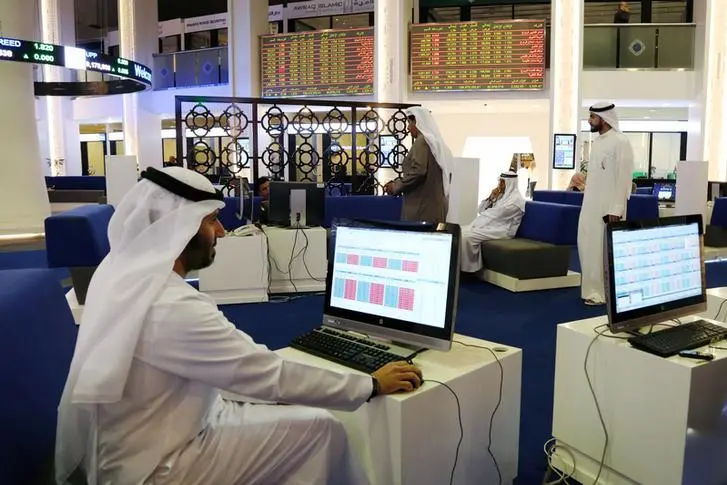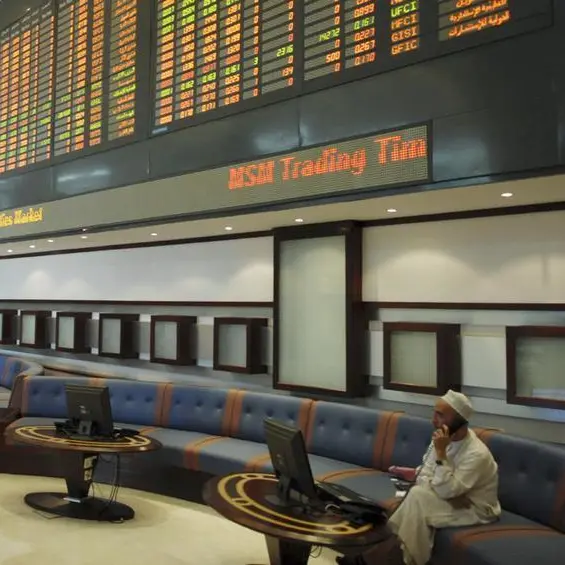PHOTO
Investors are moving more of their money into hedge funds as uncertainty grows around global market risk, but are demanding more equitable fee structures after several years of disappointing performance, a panel of experts at this week's AIM Summit in Abu Dhabi said.
A 2019 Institutional Investor Survey recently published by JP Morgan Chase found the percentage of investors looking to either maintain or increase the amount of assets they will allocate to hedge funds in 2019 has increased to 68 percent, up from 60 percent in 2018. This is despite the fact that 68 percent of investors said their hedge fund portfolio underperformed its target return in 2019.
Zachary Cefaratti, CEO of Dubai-based fund platform Dalma Capital, said that investors' perception that "we are entering the later stage" of the economic cycle is leading to investors seeking alternative assts to equities or fixed income.
"At the later stage of the cycle, investors are not only looking at hedge funds as a source of return, but also a source of diversified return, or an uncorrelated return to their core portfolio," he said.
He said that investor interest has been reignited in hedge funds offering 'macro' strategies, which look to profit from economic shifts caused by geopolitical events.
“Things like trade wars, Brexit - these are basically perceived as opportunities for macro managers to take advantage of and they also have the merit of providing a diversifying return for an investor - an uncorrelated or potentially negatively-correlated return."
Spreading the risk
Stergios Voskopoulos, head of investments at Kanoo Capital, an investment arm of the Yusuf Bin Ahmed Kanoo Group of Companies, cited diversification as the main reason for its interest in hedge fund. Kanoo Capital's core business is active investment into private equity as well as making other equity investments in the region.
“Therefore, we need to diversify from that,” he explained. “Success for us is not to beat all of the indices for a specific strategy, it's also to diversify on what we have allocated the majority of our money (towards).”
He said that it judges where to invest in hedge funds on detailed studies of the managers. For istance, not only looking at the overall returns of a hedge fund, but of the returns a manager achieves from a particular strategy in which it is interested.
“What we do from an investment perspective and approach is to be more proactive, be out there, find the best managers, talk to them and see how incentivised they are,” he said.
”There are some managers who have been very successful over the past 10 years but maybe they're not motivated any more.”
Cefaratti said that managers are facing greater pressure on fees due in some part to the rise in cheap, or even free, passive funds and the growth in companies offering 'smart beta', which are market trackers adjusted for a specific factor such as a company's size, earnings yield or market volatility to boost returns or reduce portfolio risk. Typically, hedge funds have operated on a ‘2 and 20’ fee basis, where investors pay a 2 percent management fee on assets under management, and a 20 percent performance fee on any profits generated above a mutually-agreed ‘hurdle rate’.
“Investors have figured out that there's a lot of hedge funds that are providing them with strategies that are giving them beta, or basically alternative betas that they can acquire very inexpensively, and that they shouldn't be paying 2 and 20 for exposure to very basic, very easy-to-implement factors.”
More for less
Martin Cornish, a director of the Hedge Fund Association's UK chapter and principal of law firm M.J. Cornish, said: "I think everybody recognises there has been pressure on fees, especially with the performance that has taken place within hedge.
“And we have seen people coming up with more innovative fee structures - one or 30-type structures, where investors get a choice as to whether they are going to pay zero or very low management fees in return for higher performance fees or lock-ins for a longer period.”
Cefaratti added that investors were also seeking more rigorous terms, such as higher hurdle rates, or tiered hurdles, where managers make a smaller fee on a first tranche of profits.
Voskopoulos, however, said that although fees were important, they were “not the most important thing” investors consider.
“At the end, you want to generate return, right? I might negotiate the best fee structure with the manager, and then the (return) will be negative.”
The JP Morgan Chase investor report showed the scale to which hedge fund fee structures have already changed, with only 4 percent of respondents indicating that they paid a management fee of 2 percent or higher, 37 percent pay between 1.5-1.7 percent and 46 percent pay less than 1.5 percent. Moreover, only 3 percent pay performance fees of 20 percent or higher, while almost half paying between 17.5-19.99 percent, and 40 percent paying less than 17.5 percent.
Hedge funds are also looking to attract investors with different strategies, such as investments in areas such as private debt and trade finance.
“We've seen a lot of appetite for trade finance-type funds,” Cornish said. “I think that reflects in part, the way that traditional banks have pulled back from that space.”
Cefaratti argued this was “fundamentally good for markets”, as hedge funds tended to offer trade finance on an unleveraged basis, whereas banks are using their own, leveraged balance sheets.
"The emergence of private debt as a response to 2008 ultimately is leading to a more resilient, more sound market," he said.
(Reporting by Michael Fahy; Editing by Mily Chakrabarty)
Our Standards: The Thomson Reuters Trust Principles
Disclaimer: This article is provided for informational purposes only. The content does not provide tax, legal or investment advice or opinion regarding the suitability, value or profitability of any particular security, portfolio or investment strategy. Read our full disclaimer policy here.
© ZAWYA 2019





















